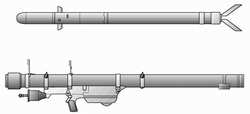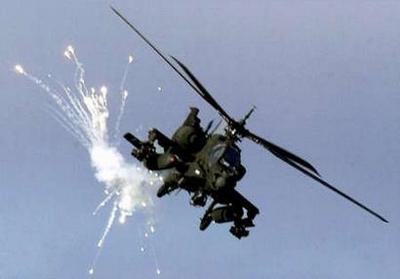Military Acknowledges Aircraft Lost To Hostile Fire
 US military leaders in Iraq,
acknowledging for the first time four helicopters and their crews
lost over the last two weeks in Iraq were shot down, have directed
new tactics for flight operations in the country.
US military leaders in Iraq,
acknowledging for the first time four helicopters and their crews
lost over the last two weeks in Iraq were shot down, have directed
new tactics for flight operations in the country.
All four choppers were brought down by enemy fire during a
recent increase in violence, and follows boasts in December by
Sunni militants of new stocks of anti-aircraft weapons including
Man-Portable Air Defense Systems (MANPADS), or shoulder-fired,
anti-aircraft missiles. The US has accused Iran of supplying
sophisticated weapons to Shiite militants, although it's unknown if
those included MANPADS.
Military officials have said insurgents in Iraq are using a
Russian-made MANPADS designated the SA-7 Grail by NATO. The Grail
is a relatively unsophisticated weapon, but has been highly
proliferated on the world's underground arms markets.
Older versions of the Grail must engage a target from behind, as
the weapon's guidance systems uses an infrared seeker to home on
the heat of an aircraft's exhaust. Although the system is rather
easily fooled by standard countermeasures -- high-intensity flares
which fool the seeker head -- a crew must know the weapon has been
fired in time to deploy them.

Newer versions of the missile are capable of head-on shots, and
once locked on a target, are much better able to differentiate
between heat sources making flare countermeasures less
effective.
Marking the first admission by a senior military official in
Iraq, Major General William Caldwell admitted the crashes of four
helicopters -- three Army and one private -- were "the result of
some kind of anti-Iraqi ground fire."
Caldwell told the Associated Press fears of an increased threat
to US aircraft are "premature," and that insurgents have targeted
helicopters since operations in the country began. Without
elaborating, presumably for security reasons, Caldwell says
the military is "already making adjustments" in it's tactics and
techniques and procedures.

Standard tactics to avoid ground fire including small-arms,
anti-aircraft artillery and MANPADS -- the presumed weapon used to
down the choppers -- includes the use of radar and infrared jamming
technology, flying lower and faster, varying routes and "jinking,"
whereby a pilot continuously varies headings and altitudes to
confuse enemy gunners.
Because MANPADS have a relatively short range and require an
operator have time to initiate the weapon, aim it, and get a lock
on a target, flying lower and faster are generally considered most
effective against them. Jamming equipment requires the crew know a
missile is inbound, and chopper crews sometimes station gunners at
open doors who also act as spotters to warn pilots of ground fire.
Jinking is generally ineffective in avoiding a guided weapon once
it's locked and fired, but violent maneuvering as an
approaching missile nears the aircraft can sometimes result in
a miss.
The al-Qaida-affiliated Islamic State of Iraq has claimed
responsibility for the latest crash last Friday in which two
crewmembers died when their Apache Longbow helicopter (file photo
below) went down north of Baghdad. In an internet statement,
the group brags insurgents have "new ways" of confronting US
aircraft without specifically identifying any new weapons or
tactics.

Recent bombings in the Iraqi capitol of Baghdad have made the
past several weeks among the bloodiest since the US occupation
began. US and Iraqi military forces are preparing for another bid
to put down insurgents in the city and quell the sectarian violence
destabilizing the elected government.
President Bush has said he wants to send more troops to the
region to aid a struggling Iraqi government. That plan has met with
stiff resistance in the US congress.
 Sierra Space Repositions Dream Chaser for First Mission
Sierra Space Repositions Dream Chaser for First Mission ANN's Daily Aero-Term (05.10.24): Takeoff Roll
ANN's Daily Aero-Term (05.10.24): Takeoff Roll Aero-News: Quote of the Day (05.10.24)
Aero-News: Quote of the Day (05.10.24) Aero-News: Quote of the Day (05.11.24)
Aero-News: Quote of the Day (05.11.24) ANN's Daily Aero-Term (05.11.24): IDENT Feature
ANN's Daily Aero-Term (05.11.24): IDENT Feature






